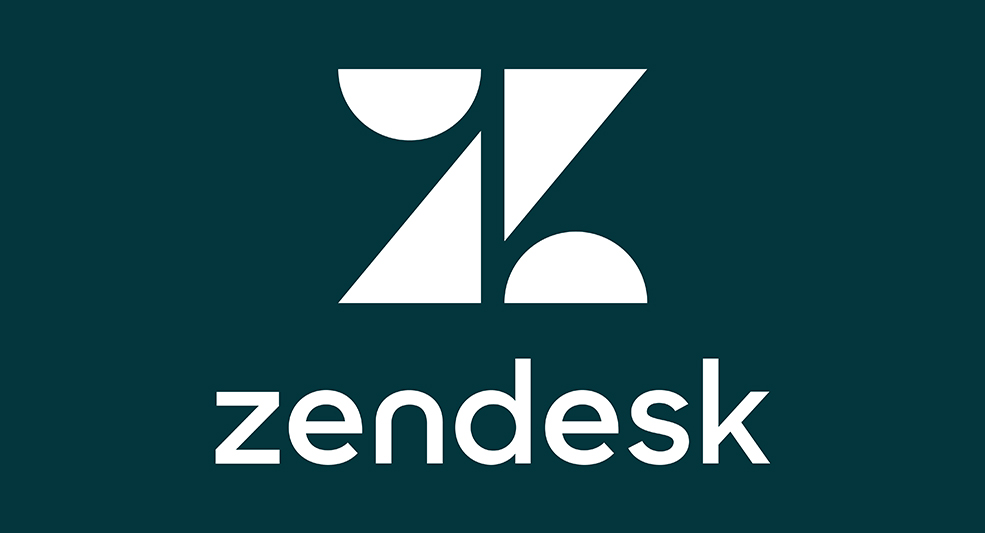Marketing is a fast-moving train that doesn’t halt at any point. During the 1960- 1980s known as the golden era of advertising, businesses utilized cheesy commercials on television, billboards, and radio to promote their brand. There was significantly less rivalry at the period, and the primary goal of marketing strategies was to sell. However, as digital media advances, an increasing number of people are attempting to make a living in the marketing profession, increasing competition. The entire marketing concept has changed, and it is now more customer-centric than it was previously. Developing a marketing strategy that works best for your business can be pretty intimidating. Every marketer needs to visualize their marketing map concretely to have a seat in this competitive field. It is when one may use a marketing model to plan and assess their efforts in order to improve their approach in the future.
It’s time for us to talk about marketing models in a little more detail.
What are Marketing Models?

Marketing models are tools that can help you create an effective marketing and communication plan that will help you reach your company’s goals. Marketing models can even calculate your efforts and predict your agency’s performance. Consider it as one of those models your teachers used to assess your performance in class; its main goal was to assist you in identifying your strengths and weaknesses so that you could improve. Similarly, regardless of the marketing model you choose, the ultimate purpose of all of these marketing models is to assist you in understanding your company’s strengths so that you may tailor your efforts to get better outcomes.
Most marketers use it because they understand that analytics plays a huge role in the marketing field and how you position your brand. So for the sake of all those observant, we have come up with the best marketing models that will assist you in creating an optimal strategy for your organization, project the influence of your marketing efforts and ultimately achieve your marketing objective.
The Marketing Models are as follows:
SWOT Analysis

SWOT analysis, also known as strength, weakness, opportunity, and threat analysis, is a framework you can use to evaluate your business’s position in the market and then build strategic planning accordingly. It considers the internal and external factors of your business to facilitate the data-driven and fact-based look at the strengths and weaknesses of your organization. Let’s discuss the four factors that this model is based on:
Strength
Strengths dictate an organization’s excellent key points to win over its competitors. Examples of a company’s strengths are:
- A loyal customer base.
- Strong brand.
- Unique technology.
- A strong balance sheet.
- Everything that is helping them to lead.
Weakness
Weaknesses are the factors that are causing hindrances to your business’s success. These are the areas where your company needs to work harder to remain in the competition. Your company’s weaknesses include high debt, lack of capital, weak brand, and inadequate supply chain.
Opportunities
Opportunities are the external factors that can help your business get a great deal and outrank your competitors. For example, if a country bans a particular product in their market, it becomes an opportunity for your company to sell in a new market with better plans.
Threats
Threats are the factors that can be a serious issue for your organization. For example, raising taxes, increasing competition, or natural factors like droughts and floods can significantly impact your production if your company is placed in any of those places.
What are The Ways to Perform SWOT Analysis?
Internal Factors
The internal factors like human resources, financial assets, operational efficiencies, and other tangible assets like brand name are great sources to know about the strengths and weaknesses of your organization.
For example, things that are doing well for your organization and your strongest assets are your business’s strengths, whereas the detractors are the weaknesses.
External Factors
The exterior factors like monetary policies, access to suppliers, and market changes are equally crucial for the success of your organization as they help you draw a list of weaknesses and opportunities for your business.
For example, demographics that your business might have left and trends in different marketplaces are the opportunities. In contrast, the number of competitors and new regulations in a marketplace are potential threats for your business.
Example

The SWOT analysis of the brand Coca-Cola shows its strengths, such as its globally recognized brand name and extensive distribution network, and weaknesses such as increased competition from healthier beverages and currency variation in foreign countries.
7 P’s of The Marketing Mix Model

It is one of the most effective marketing models created by E. Jerome McCarthy. It ensures customer satisfaction and your product’s value accuracy to help your business reach its desired goals.
Let us know thoroughly about the 7 P’s to know exactly how to use them.
Product
The first P in the 7 Ps refers to the business’s product or services. It deals with the decision regarding a product’s packaging, warranties, and looks. In this case, you have to make your efforts by wholly focusing on the customers. You must tell them every detail about the product, from what it is to how it will be helpful in their lives.
Price
The second P stands for the total price methodology for your services by keeping in mind the customers. This segment does not cover the selling price but all the other discounts, fees, and other terms. Always check your position in the market before making the pricing claim. Your pricing must reflect what you advertise.
Promotion
Promotion is the process of advertising your business to your customers. The major motive of this P is to popularize your product among maximum people in the market. It includes all the forms of advertisements like SEO, sponsorship, SEM, etc. It is a crucial stage to increase your business sales.
Place
This P includes locations such as the manufacturing, viewing, and distribution centers. It would help if you made certain that your product is easily accessible to your potential clients. This P applies to your in-house stores, eCommerce stores, and other third-party platforms.
People
People here include your potential customers and your customer service team, staff, salesperson, and anyone who has participated in your marketing process. Your staff needs to be humble and effective to affect your customers positively.
Process
This P refers to your product’s whole distribution procedure. You must keep track of all aspects of your business, including functions, tasks, and other activities. It’s the only way to keep your company running smoothly. The goal of the procedure is to boost your revenue creation, so double-check that it is occurring, and if it isn’t, make some adjustments to your efforts.
Physical Evidence
To confirm the purchase, always offer your consumer a physical entity. For example, a receipt or a card can instill a sense of worth in clients.
Example

The best-suited example for this model is Richard Mille’s watches, whose open design and material treat its customers. The pricing is kept according to the value perceived by the customers. Their exclusive marketing in newspapers and magazines offers them a high-end clientele. The distribution methodology of Richard Mille focuses on the most exciting markets like the wealthiest countries. When it comes to determining the target audience, the premium codes are followed. The watch’s manufacturing process mixes heritage and contemporary. As a result, it includes all seven Ps of the marketing mix, which has played a significant role in their success.
RACE Marketing Model

RACE model consists of 4 stages of digital marketing strategy: Reach, Act, Convert and Engage. Every stage aims to advocate for your brand, offering strategies that engage your customers in their whole buying journey. However, one particular stage comes before all the reach stages, which is the plan.
Let us talk about every stage in detail.
Plan
Planning should be the first stage in your digital marketing approach. It is where you create your marketing objectives and determine whether or not they are SMART. Specific, Measurable, Achievable, Relevant, and Time-bound goals, or SMART goals, are the foundation for your company’s success.
Reach
Reach is the stage where you desire to offer maximum exposure to your brand using digital media. This stage allows you to track your marketing efforts by checking your generated traffic by your website and social media campaigns. You can increase your brand’s reach with the effective use of the following media:
- Paid media includes your PPC, paid social, native ads, display ads, etc.
- Earned media includes your reviews, social shares, mentions, media coverage, guest posts, etc.
- Owned media that includes websites, social media pages, emails, blogs, etc.
Calculate your reach by keeping track of your followers and unique visitors to your website.
Act
Act in the RACE is a short form for Interact. You offer something valuable to your prospects at this stage to build a relationship with them. This stage aims to generate as many leads as possible for your company. Your future conversion rate is determined by the number of leads you generate. You must evaluate both the issues of quality and quantity in this case. Email addresses, website visits, and product purchases are all lead generation sources that you can readily measure with Google Analytics.
KPI for the Act stage leads, lead conversion rate, share, likes, and comments.
Convert
It is the stage where you must convert your leads into paying consumers. It can be done through internet transactions or offline means. You must monitor your conversion rate and adjust your techniques as necessary. If specific things aren’t resulting in any conversions, you should remove them and replace them with a better option. Make a point to evaluate all of your efforts and determine what is working for you. It can be accomplished using a split test, in which you make tiny adjustments to your current campaign and then observe the outcomes. Conducting surveys and tailoring your content are two more excellent ways to enhance conversion.
The conversion stage’s KPIs are average order value, online and offline sales, and revenue generation.
Engage
This stage aims to build a strong bond with your customers. The purpose is to turn first-time buyers into regular customers who will spread the word about your business. Offering valuable material to your clients via social media platforms and email campaigns is the best way to enhance interaction. In addition, conducting a customer satisfaction survey at least once a year is the best way to keep track of this factor.
KPIs for the engagement stage are reviews on external sites, advocacy, repeat purchases, loyalty, and satisfaction.
Example

All streaming platforms, such as Netflix and Disney, are excellent examples of businesses that use RACE marketing techniques. Let’s talk about Netflix for a moment. Netflix initially reaches out to potential clients by offering them a free trial of its services for the first month. The system then assesses the clients’ interests and provides them with relevant ideas. Next, it asks its clients to join up for a full-time subscription after one month. Finally, by pleasing consumers with its original works, it increases engagement.
Porter’s Five Forces

Porter’s five forces, also referred to as the competitive forces model, focus on five potential factors influencing every business. These five factors, known as forces here, can help you determine the strengths and weaknesses of your business. This model helps you determine the competitive level in your industry and form a plan that enhances the profitability of your business.
The five forces of Porter’s model are as follows:
Competition within the businesses
This force helps you track the total number of your business competitors at both micro and macro levels. You can analyze your direct competitors and compare their services with yours. Businesses with lesser competition might feel fascinating initially, but most of them are temporary. At the same time, businesses with huge competition might have to take a step back and lower their prices to stand out from the rest of their fellow competitors offering the same products or services.
Threats from the alternate products
Other substitutes that your customers can use as an alternative to your products and services pose a huge threat to your business. These substitutes even have the potential to diminish the existence of your products. For example, satellite tv services completely replaced cable television services as people found it a more convenient source for entertainment. Companies with no replacements have a competitive edge over their competitors because they can raise product pricing and lock in opportunities.
Power of suppliers
This force explains to you the power of suppliers in increasing your input prices. When there are fewer suppliers, your entire business is dependent on that particular supplier. With the availability of many suppliers, your company will have the option to shift to a better and cheaper alternative.
Power of customers
Your customers have the power to lower your prices by using their negotiation techniques. However, they might have experienced a great deal with your competitors, making it incredibly tough for you to gain an advantage over them. Therefore, in order to preserve your market position, you must have a flexible connection with your buyer.
New entrants into your industry
The newbies into your industry affect your business to a great extent. Their entry might lead to a decline in your product’s cost or an increase in the cost of your current competitors. Both can harm your business’s performance. However, its effect depends on how secure your business is among the competitors.
Example

We can explain this marketing model by considering the example of Apple. As the largest multinational, Apple competes directly with companies such as Google, Samsung Electronics, and others and thus has a higher competitive force. Apple customers’ bargaining power is weak compared to their collective bargaining power, which could result in large losses for the corporation. Because Apple has built a brand identity that is difficult to eradicate from the marketplace, the threat posed by a new entry is relatively lesser. Apple has many suppliers, so supplier power is a weak factor for them. The market force due to substitutes is also low for Apple, as all other alternatives have limited abilities compared to Apple’s products.
TOFU, MOFU, and BOFU Marketing Model

Most of us are well aware of the marketing funnel concept that represents the entire process in a buyer’s journey. There are a total of three stages of the marketing funnel that we will represent in the following ways:
TOFU(Top of the Funnel)
It is the first stage of the funnel model, also known as the awareness stage. It is when the customer has no idea about your product and is seeking related information. Your responsibility is to inform your potential customers about your product and enhance your brand visibility. Blogs, trade shows, social media, and infographics are good strategies to raise brand awareness. The ultimate goal of this step is to generate leads, which will be used in the subsequent phases of the funnel.
MOFU( Middle of the Funnel)
This funnel stage is also known as the consideration stage. consumers are now aware of their problems and contemplating your product as a possible solution; they’re also comparing your brand with your competitors. With the help of targeted emails, product demos, and free trials, it is now your responsibility to nurture your customers. It would help if you convinced them that your product is the greatest choice.
BOFU( Bottom of the Funnel)
The decision stage of the funnel is where the customers are committed to building a loyal and trustworthy relationship with your brand. All you have to do now is give them a little push in the form of further incentives, urgency, or reassurance to get them to buy from you. Make sure your prospects have all the information they need regarding your product so that they feel compelled to purchase from you.
Example

Zendesk uses social media platforms, PPC ads, referrals, blogs, and podcasts to raise brand awareness and deliver its product in front of potential customers. Then they stimulate their clients’ attention by giving a customized demo video of their product that illustrates how Zendesk may be incredibly beneficial to their business. Then they wrap up the transaction with a short but effective CTA and leave the rest up to the clients to decide.
Final Words
Marketing models establish a framework for other businesses to evaluate their brand’s strengths and weaknesses. These models help you to create strategies that work efficiently for your business. For example, the SWOT model informs you about various external and internal factors that can be an opportunity or threat for your business. Whereas in the other models like the 7P’s of the marketing mix and Porter’s five forces, you learn about the factors that play a crucial role in the whole process of your business.
